Are you tired of your car constantly reminding you that there is something wrong with your DEF level sensor?
How to trick a DEF level sensor is often discussed in the context of troubleshooting or bypassing issues with selective catalytic reduction (SCR) systems in diesel engines. These sensors are crucial for monitoring DEF levels and ensuring compliance with emissions standards. However, understanding how they operate and how adjustments or bypasses might be implemented is essential for resolving specific problems or experimenting under controlled conditions. As such, this guide will provide an overview of DEF level sensors and explain how to trick them in various scenarios.
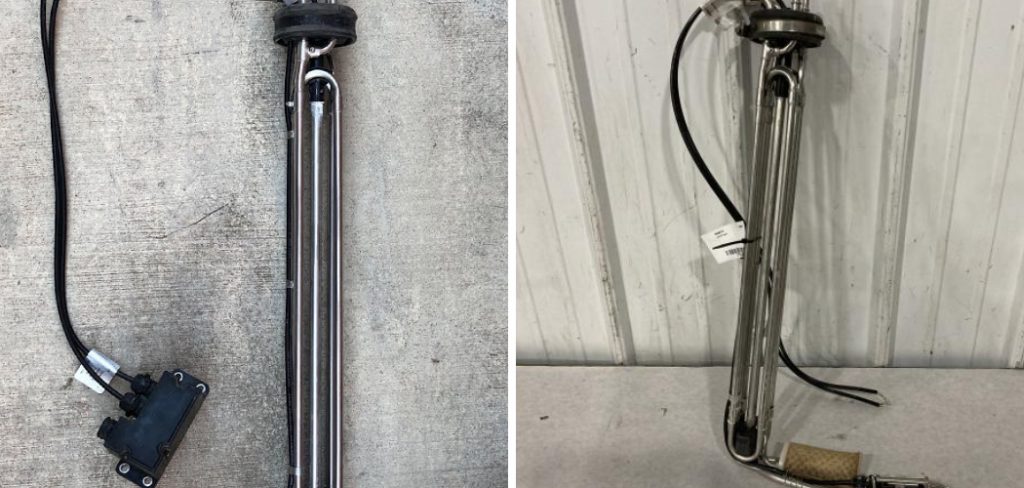
It is critical to approach this topic responsibly and ensure adherence to legal regulations, as tampering with emissions control systems can have significant environmental and legal consequences.
What Are the Benefits of Tricking DEF Level Sensors?
There are several potential benefits to tricking DEF level sensors, including the following:
- Cost Savings: By bypassing the DEF system or using cheaper fluid substitutes, drivers and fleet managers can save on maintenance and operating costs.
- Reduced Downtime: DEF systems can malfunction and cause unexpected vehicle downtime. By tricking the sensors, drivers can avoid these interruptions and keep their vehicles on the road.
- Increased Performance: In some scenarios, bypassing or manipulating the DEF system may improve engine performance or fuel efficiency.
- Flexibility for Non-Road Applications: While diesel engines used in non-road applications may still require SCR technology, they may not have to adhere to strict emissions regulations. This allows for more flexibility in utilizing and managing the DEF system.
- Cost Savings: By avoiding or manipulating DEF, drivers can save money on fluid costs and repairs associated with a malfunctioning system.
Overall, while bypassing or tampering with the DEF system may seem like an attractive option for some drivers, it ultimately undermines the purpose of SCR technology and can have negative consequences on both the environment and vehicle performance.
What Will You Need?
To properly maintain your DEF system, you will need a few key items:
- DEF Fluid: This is the system’s most important component and is required for proper operation. It can be purchased at many auto parts stores or at truck stops.
- A DEF Tank: Most vehicles equipped with SCR technology have a dedicated tank for storing DEF fluid. It’s essential to keep this tank filled and free of any contaminants.
- A DEF Pump or Nozzle: To refill your DEF tank, you will need either a pump or nozzle designed explicitly for dispensing DEF fluid. These can also be found at auto parts stores or truck stops.
- Gloves and Safety Glasses: It’s always a good idea to wear gloves and safety glasses when handling DEF fluid, as it can be harmful if it comes into contact with your skin or eyes.
8 Easy Steps on How to Trick a Def Level Sensor
Step 1. Ensure Safety Precautions:
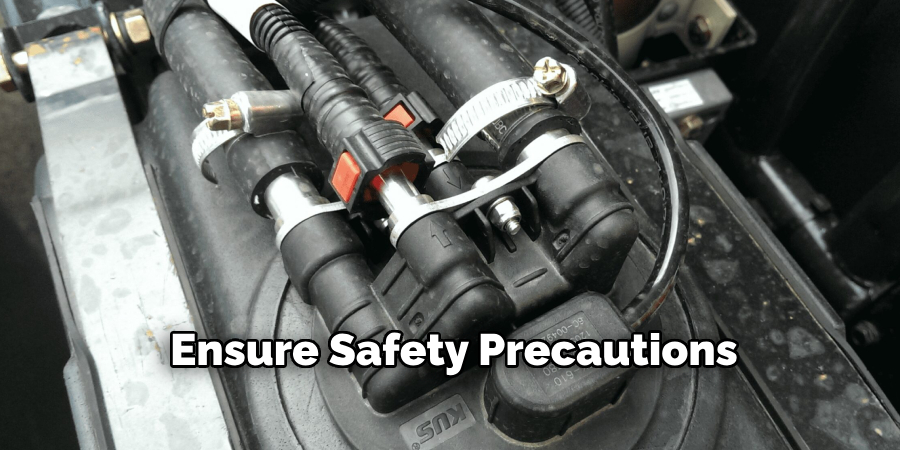
Before beginning any work on your DEF system, it’s crucial to prioritize safety to avoid accidents or exposure to harmful substances. Start by parking your vehicle on a flat, stable surface and ensuring that it is turned off and the ignition is entirely off. Engage the parking brake to prevent any movement.
Wear gloves to protect your hands and safety glasses to shield your eyes from potential splashes of DEF fluid, which contains urea and can cause irritation if it comes into contact with your skin or eyes. Ensure you are working in a well-ventilated area, as this minimizes potential risks when handling DEF or cleaning up spills. Finally, have a cleaning cloth or absorbent material nearby to address any accidental spills promptly. Once all precautions are taken, you can confidently proceed to the next step.
Step 2: Locate the DEF Tank
The DEF (Diesel Exhaust Fluid) tank is typically located in an easily accessible area of your vehicle; however, its exact placement may vary depending on the make and model. To identify the DEF tank, consult your vehicle’s owner’s manual, which will provide detailed information about its location. Commonly, the DEF tank will have a distinct blue cap to differentiate it from other fluid reservoirs, such as fuel or engine oil.
On most passenger vehicles, it is often located adjacent to the fuel filler cap, while on larger commercial vehicles, it may be found near the engine bay or under the chassis. Ensure you are opening the correct tank, as adding DEF to the wrong reservoir can cause serious maintenance issues. If you’re uncertain, double-check your manual or look for labels indicating “DEF” or “AdBlue,” another term for Diesel Exhaust Fluid.
Step 3: Filling the DEF Tank
Once you have located the DEF tank, ensure the vehicle is parked on a level surface and turned off. Remove the DEF filler cap by twisting it counterclockwise. Using a proper DEF container or dispenser, carefully pour the fluid into the tank, avoiding spills. Most DEF tanks have a built-in overflow prevention mechanism, but it’s essential not to overfill. After filling, securely tighten the cap by turning it clockwise until it is firmly in place.
Step 4: Cleaning Up and Disposal
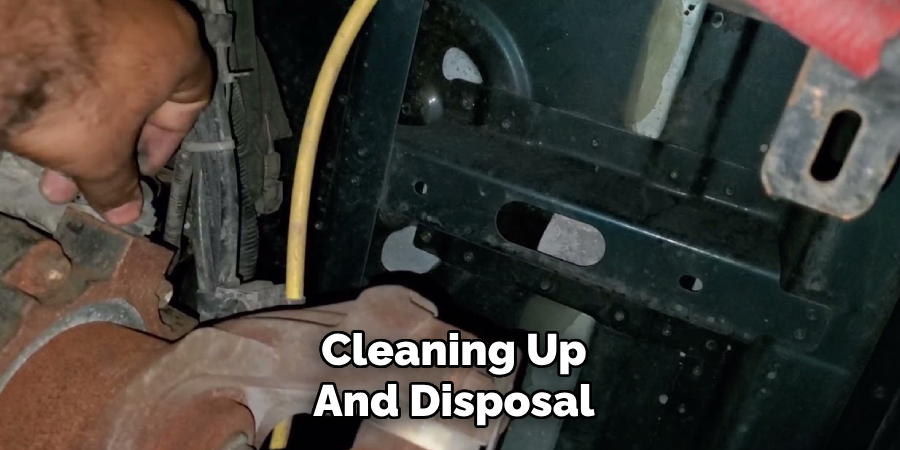
Once the DEF tank is filled and the cap is securely in place, take a moment to clean up any excess fluid that may have spilled during the process. Dispose of empty DEF containers responsibly, following local recycling or disposal regulations. Proper cleanup helps maintain the vehicle’s components and ensures environmental safety. Finally, double-check that the DEF tank cap is tightly secured before starting the car.
Step 5: Monitoring DEF Levels
Regularly monitoring fluid levels after filling the DEF tank is essential to ensure your vehicle operates efficiently. Many cars have a DEF gauge on the dashboard that indicates when the fluid is running low. Pay attention to warning lights or notifications related to DEF. Maintaining appropriate fluid levels helps prevent vehicle performance issues and ensures compliance with emissions standards.
Step 6: Storing DEF Properly
The proper storage of DEF is crucial to maintaining its quality and effectiveness. Store DEF in a cool, dry place, away from direct sunlight and extreme temperatures. Exposure to high heat or freezing conditions can degrade the fluid, reducing its efficiency.
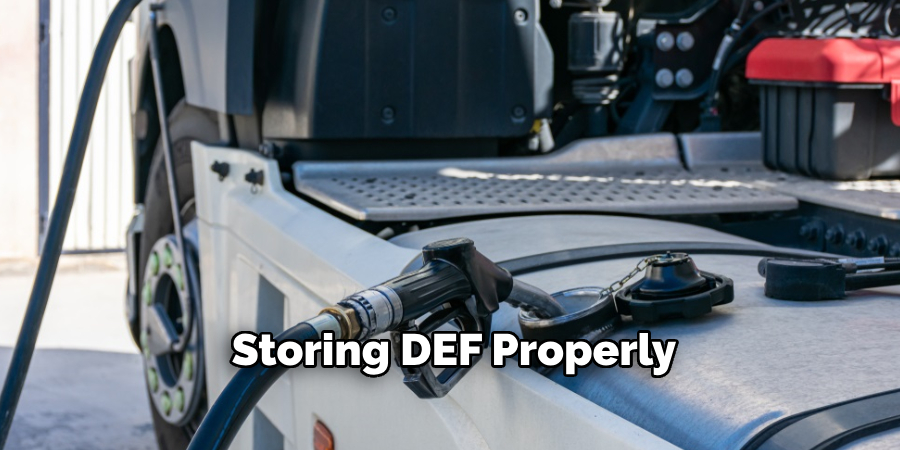
Ensure containers are sealed tightly to prevent contamination from dirt or foreign substances. Always check the expiration date on the DEF packaging, as expired fluid may not meet performance standards. Proper storage practices ensure that your DEF remains reliable and safe for use.
Step 7: Usage and Handling of DEF
When using DEF, it is essential to handle it with care to maintain its integrity and effectiveness. Always use clean, dedicated dispensing equipment to avoid contamination, as even small amounts of foreign substances can compromise the fluid’s quality. Inspect the equipment before transferring DEF to a vehicle or storage container for any residues or damage.
Spills should be wiped immediately to prevent slippery surfaces or environmental hazards, although DEF is not classified as dangerous. It’s also important to note that DEF should never be diluted with water or other liquids, as this can affect the concentration and ultimately reduce its ability to reduce emissions. When pouring DEF, be mindful of the fill level indicator to avoid overfilling and wasting the fluid.
Step 8: Keep Equipment Clean
Keeping equipment clean is essential for maintaining operational efficiency and prolonging the lifespan of your machinery. After handling DEF, ensure that all equipment, including funnels, nozzles, and storage containers, is thoroughly cleaned to prevent contamination.
Even small amounts of impurities can disrupt the performance of DEF and potentially harm the Selective Catalytic Reduction (SCR) system. Use lint-free cloths or dedicated cleaning tools to remove any residues from the equipment, and confirm that no dust, dirt, or foreign substances have entered during handling. Regular inspections and maintenance routines can help identify issues early, minimizing downtime and repair costs.
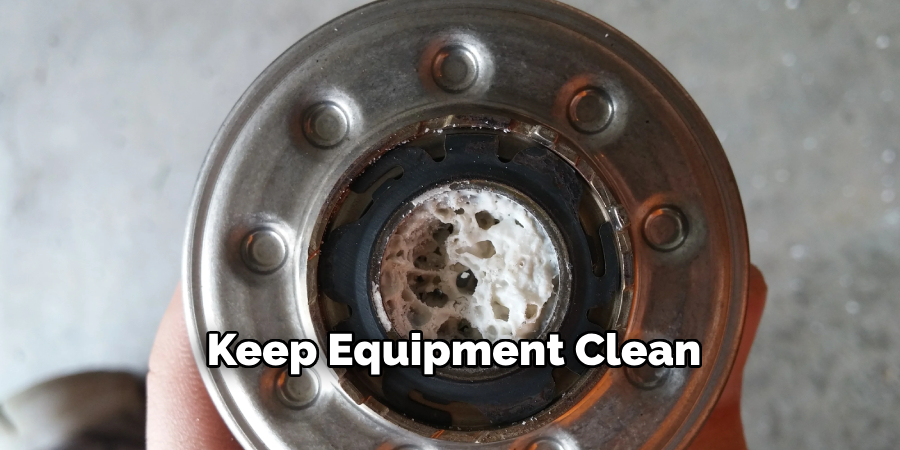
By following these guidelines, you can ensure the proper handling and storage of DEF, which will ultimately result in efficient and effective emissions control.
5 Things You Should Avoid
- Using Contaminated Fluids: Adding substances other than DEF, such as water or other chemicals, can damage the sensor and the entire SCR system. This not only leads to system malfunctions but can also result in costly repairs.
- Tampering with System Components: Physically altering the DEF level sensor or related components is illegal and can void warranties. It may also cause the system to misread DEF levels, leading to engine performance issues or regulatory violations.
- Ignoring Proper DEF Quality: Using low-quality or improperly stored DEF can cause crystallization or clogging within the system. This can negatively affect the sensor’s accuracy and the overall emissions control performance.
- Blocking Ventilation Around the Tank: Obstructing airflow or blocking the DEF tank’s ventilation can lead to pressure build-up, causing inaccurate readings or long-term damage to the sensor and tank.
- Attempting Software Modifications: Hacking or reprogramming the vehicle’s software to bypass DEF requirements is unethical and illegal in most jurisdictions. This action can result in fines, penalties, or even vehicle impoundment.
Ensuring the proper handling, usage, and maintenance of the DEF system preserves sensor functionality and keeps your vehicle compliant with environmental regulations.
Conclusion
It is essential to understand that attempting to trick a DEF level sensor or disable its functionality is not recommended.
Tampering with the DEF system can lead to serious consequences, including legal ramifications, voided warranties, and potential damage to the vehicle’s exhaust system. Furthermore, such actions undermine efforts to reduce environmental pollution and adhere to regulatory standards.
Instead, it is advisable to maintain the DEF system properly, ensure timely refills, and address any sensor issues through legitimate repairs or manufacturer guidance. Compliance with environmental laws and adherence to vehicle maintenance best practices benefit both the individual and the broader community.
Hopefully, the article on how to trick a def level sensor has shed light on the importance of maintaining and properly caring for a vehicle’s DEF system.
About
Safety Fic is a distinguished figure in the world of Diy design, with a decade of expertise creating innovative and sustainable Diy solutions. His professional focus lies in merging traditional craftsmanship with modern manufacturing techniques, fostering designs that are both practical and environmentally conscious. As the author of diy, Safety Fic delves into the art and science of Safety Fic-making, inspiring artisans and industry professionals alike.
Education RMIT University
(Melbourne, Australia) Associate Degree in Design (Safety Fic) Focus on sustainable design, industry-driven projects, and practical craftsmanship. Gained hands-on experience with traditional and digital manufacturing tools, such as CAD and CNC software.
Nottingham Trent University
(United Kingdom) Bachelor’s in diyfastly.com and Product Design (Honors) Specialized in product design with a focus on blending creativity with production techniques. Participated in industry projects, working with companies like John Lewis and Vitsoe to gain real-world insights.
Publications and Impact
In diy, Safety Fic his insights on indoor design processes, materials, and strategies for efficient production. His writing bridges the gap between artisan knowledge and modern industry needs, making it a must-read for both budding designers and seasoned professionals.
